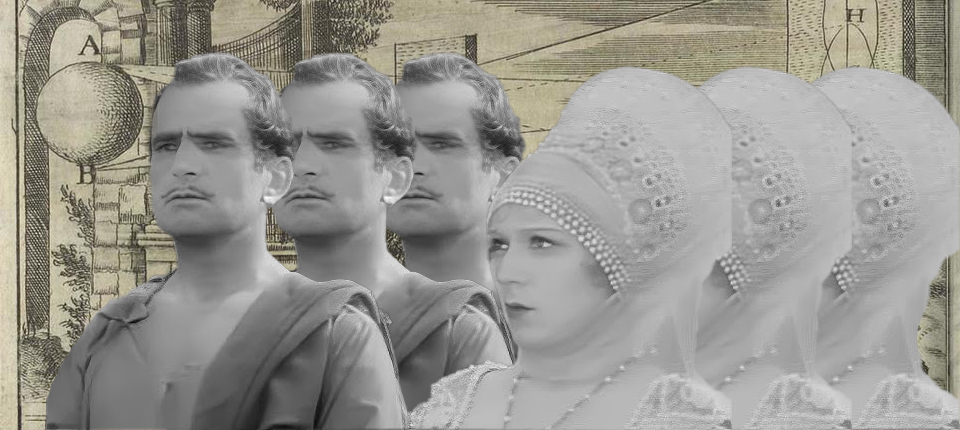In Osgood Perkins’s recent serial-killer chiller Longlegs, Nicolas Cage is the only actor mentioned in the credits alongside his character name: “NICOLAS CAGE AS LONGLEGS”. He appears in the film under heavy, wild prosthetics meant to resemble extreme plastic surgery; early marketing was secretive enough that at one point a teaser trailer was released with a black censorship box over his face. On this basis it is possible to interpret that grandstanding “AS LONGLEGS” as a tacit reassurance that it is Cage we are seeing in the first place. It might also be a boast, as if Perkins could not help but draw attention to the presence of his star.
Either way, such emphasis becomes unnecessary the moment Cage appears on the screen – his affect is so utterly distinctive that it cannot be disguised, and this obvious singularity is what makes him something of an acquired taste. It is also what leads many of his fans – including the critic Zach Schonfeld, whose book is about the first thirteen years of the actor’s career – to recognize him as a freaky master of his craft. How Coppola Became Cage was inspired in part by a conversation that the author had with Ethan Hawke in 2018. “I think Nicolas Cage is one of the few people in the history of acting who has truly changed [the form]”, Hawke told him when the two spoke for Newsweek, adding that Cage was “the first actor since Brando” to have “actually done anything new”.
Hawke is not wrong. Cage’s style, which he himself calls “Nouveau shamanism”, and which is heavily inspired by silent cinema, is expressionistic – prone to sharp and unpredictable swerves of both volume and mood. (Schonfeld quotes the director David Lynch describing him as “the jazz musician of actors”. “If you don’t channel him or ride herd on him”, Lynch adds, “it could become frightening music.”) How Coppola Became Cage, which is written in plainspoken prose that is largely free of stylistic flourishes, is in some ways as straightforward as its subject is off piste, which may be for the best: a book about Cage written in the literary equivalent of his acting style is a tantalizing prospect, but might leave the reader with a migraine if it too stretched to more than 300 pages.
Schonfeld’s primary focus here is research, and his extensive interviews with relatives, producers, casting agents and directors make this a touching paean to the fact that it takes a village to make a movie. The same might be said of the making of a movie star. The book documents Cage’s ill-advised early attempts at method acting; his curious accent choices; his occasional reliance on prop-noses and unnecessary backstories. It also makes it clear that even as he sometimes drove his collaborators mad, his eccentric talent was enough to keep them working with him. “I was always infuriated with him”, Schonfeld hears from Barbara Zitwer, the producer of Vampire’s Kiss, “but I also thought he was completely brilliant.”
How Coppola Became Cage depicts its subject, in his early years, as a nervy, vaguely troubled, sometimes maddening oddball, equal parts strange and sexy: “goofy and handsome and manly”, as the author succinctly puts it. In other words: not entirely different from the Cage we know today, just a little less refined, a little less certain of himself. One of the most fascinating things about big-league celebrities is their construction, the work that is done to finesse them into something closer to a brand than a person. In Cage’s case “brand” may be inaccurate; it might be more fitting to say “objet d’art”. As the nephew of Francis Ford Coppola, the young Cage found himself entering Hollywood with certain expectations to live up to, and Zach Schonfeld presents his shucking off of the family name as a kind of ritual gesture. If Nicolas Kim Coppola could only ever be the lesser relative of a famous man, Nicolas Cage could be a startling, sometimes dangerous new invention. Here we see that startling invention in the earliest stages of development, and part of the pleasure of reading the book is in knowing how this particular Frankensteinian Hollywood experiment turned out. Few contemporary stars are this alive.
Philippa Snow is a critic and essayist based in Norfolk. Her most recent book is Trophy Lives: On the celebrity as an art object, 2024
The post Nouveau shaman appeared first on TLS.

 By Times Literary Supplement | Created at 2024-10-29 21:41:39 | Updated at 2024-10-30 09:28:10
6 days ago
By Times Literary Supplement | Created at 2024-10-29 21:41:39 | Updated at 2024-10-30 09:28:10
6 days ago



